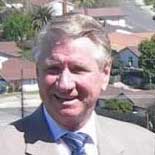Page‹
Page› Next Page›
Reverse Mortgage Pros and Cons
Getting a reverse mortgage is a major financial decision that involves both benefits and risks. Reverse mortgages are relatively complicated so there is a lot of information for borrowers to consider. While a reverse mortgage eliminates your monthly mortgage payment, your loan balance actually increases over time which can significantly reduce the equity you have in your home. Reverse mortgages can provide greater financial freedom but that comes at a long term cost and the worst case scenario can be very challenging for borrowers. Given the financial commitment and potential risk involved, prospective borrowers should always weigh the pros and cons of a reverse mortgage before applying.
The chart below outlines the positive and negatives of a reverse mortgage including key borrower benefits and challenges. There are several factors for borrowers to understand, both good and bad. The pros of a reverse mortgage include eliminating your monthly mortgage payment, accessing a significant amount of equity in your home tax-free and retaining ownership of your property.
Additionally, you are not required to pay back the mortgage unless you sell or vacate the property and there are no restrictions on how you spend the proceeds from a reverse mortgage. Finally, according to industry regulations, you can never owe more than your property value, even if you end up with negative equity.
While a reverse mortgage offers several advantages, there are drawbacks that borrowers should be aware of. Cons of a reverse mortgage include that your loan balance increases over time -- this is called negative amortization -- which decreases your property equity, especially if home values do not appreciate. This also reduces what you leave for your heirs, which may or may not be a priority.
Also, your interest expense is added to your mortgage which increases your loan balance plus the interest rate for a reverse mortgage is higher than a standard forward mortgage. It is also important to highlight that you are still required to pay property tax, homeowners insurance as well as property maintenance costs. Finally, you are required to pay an upfront and ongoing mortgage insurance which are extra costs for borrowers even though they are added to your loan.
Review the reverse mortgage pros and cons in the chart below to help you decide if it is the right option for you.
Use the FREEandCLEAR Lender Directory to find leading lenders in your state that offer reverse mortgages.
The example below the chart demonstrates one of the biggest risks of a reverse mortgage -- that you could lose all the equity in your property as the reverse mortgage balance grows over time. The example shows that if the interest rate of a reverse mortgage is greater than the property appreciation rate then you could lose all of the equity in your property, depending on the length of your reverse mortgage. Although the example represents the worst case scenario for a reverse mortgage, it illustrates the downside risk that prospective reverse mortgage borrowers should consider. Review the chart and example below so that you can understand the upside and downside of a reverse mortgage to decide if it is the right option for you.
The red line in the chart shows how the principal balance for a reverse mortgage with an initial balance of $100,000 and an interest rate of 5.1% grows over time. At the end of year 30, the principal balance for the reverse mortgage is approximately $660,000.
The blue line in the chart shows how the value of the property changes over time using a $286,000 initial property value and 2.0% annual rate of property appreciation. At the end of year 30, assuming the property value increases 2.0% every year, the value of the property is approximately $520,000.
The green line shows the equity in the property, or the value of the property minus the balance of the mortgage on the property.
In this example, because the reverse mortgage balance increases faster than the property value, at the end of year 30, the owner’s equity in the property is approximately negative $140,000. Although you can never owe more on your reverse mortgage than value of your property, you can lose all of your equity which means that your ownership stake in the property is worth nothing. The chart is only one example and represents the worst case scenario for a reverse mortgage. It is certainly possible for the property value to increase faster than the reverse mortgage balance, in which case your equity in the property will grow. Additionally, most reverse mortgages are shorter than 30 years which limits the potential growth of negative equity. But this example effectively demonstrates the biggest downside of a reverse mortgage -- you could lose all of your equity in your property.
This example shows a reverse mortgage after 30 years but there is no set term for a reverse mortgage. A reverse mortgage lasts as long as the owner lives in the property or until the mortgage is paid off so the actual term could be shorter than, or potentially longer than, 30 years.
Sources
"How the HECM Program Works." Federal Housing Administration. U.S. Department of Housing and Urban Development, 2020. Web.
About the author